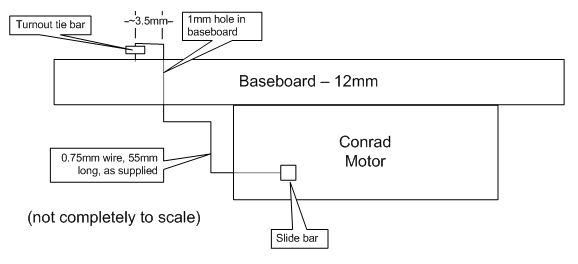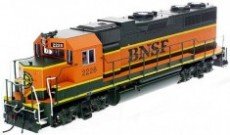Everything on model trains, model railroads, model railways, locomotives, model train layouts, scenery, wiring, DCC and more. Enjoy the world's best hobby... model railroading!
Yes or No to N Gauge for Starters?
Ian is interested in returning to model r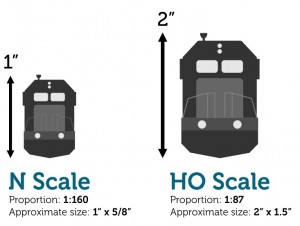 ailroading and asks:
ailroading and asks:
“I have been a previously train buff but now after retiring I have caught the bug again after seeing all the action on this blog. The area I have is 5×5 meters (16 foot square) my ex computer room and I am thinking N gauge (N scale) for maximum track and rolling stock. Any suggestions please? In the past I have been involved in electronics. Regards Ian”
Locomotive Run Sluggish
Henry asks readers:
“I have an 50 year old DC layout with several different types of locomotives which run smoothly. However, I have a Marklin (3034) Class E41 Electric Unit that runs very sluggish. I have check the pick up shoe which seems to be ok. Why do the other locos run ok but this Marklin one doesn’t?”
Hornby Ringfield 3/5 Pole Armatures
John models OO Gauge and asks readers:
“Help please. I have an old Class 110. 3 car multiple unit Hornby R369 with a 3pole motor which could perform better. So I saw a video on how to change to 5pole, but on my motor armature the new 5pole (Part No X9024) shaft is only 1.99 mm diameter and the old 3pole shaft is 2.37 mm diameter. I am informed that bushes are or were available to fit. Can any one help to find or know who makes them.”
Suitability of Conrad Point Motors
David from New Zealand kindly sent in this article to share –
Description of Conrad point motors and their suitability for my N gauge layout
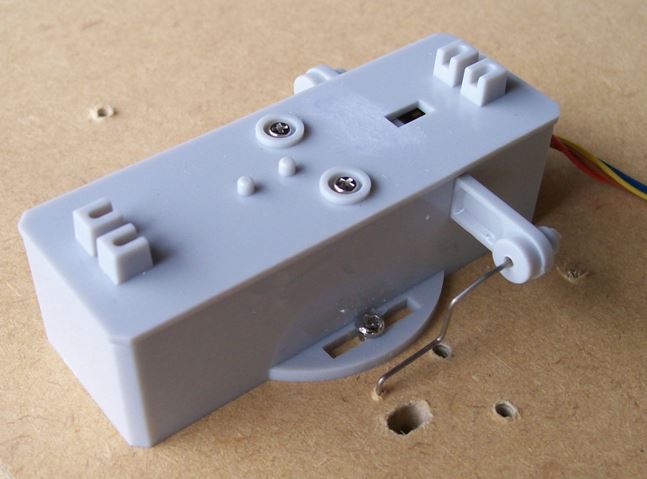 I have recently returned to railway modelling after more than 50 years and I spent quite a lot of time researching the current marketplace before buying any equipment. Having decided on N gauge (N scale in USA) because of space limitations, I set up a very simple test bed with some sections of Peco track and some turnouts, both insul-frog and electro-frog.
I have recently returned to railway modelling after more than 50 years and I spent quite a lot of time researching the current marketplace before buying any equipment. Having decided on N gauge (N scale in USA) because of space limitations, I set up a very simple test bed with some sections of Peco track and some turnouts, both insul-frog and electro-frog.
One of my aims was to have ALL the turnouts motorised, and the other was to use electro-frogs except possibly where no electro-frog version of the turnout was available, e.g. Peco ST44/ST45 curved turnouts. (I discarded these in the final layout as the radii were too small). So the hunt was on for point motors which could also switch electro-frogs, and which were affordable in quantity.
There’s no getting away from the fact that the Peco point motor is designed for OO/HO. It will fit under an N gauge turnout but the movement of N gauge turnout blades is only 3mm. Therefore it is difficult to get accurate and reliable operation with N gauge, particularly when you add a microswitch unit to the motor. A Seep point motor works on the same principle and with those, the built-in frog switch only just works because of the limited turnout-blade movement.
Testing the Conrad
During my investigations I came across a couple of short videos about the Conrad point motor, so I bought a couple of motors and tested them. The basic design of the Conrad motor is to use a stiff wire directly up through the baseboard into the tie bar. This works OK with OO/HO turnouts (and probably O gauge as well, but I have no experience there) but again, it doesn’t work too well with the short travel of N gauge turnouts. However, one of the videos shows the use of a crank and I can confirm that this works brilliantly. The crank reduces the motion of the Conrad slider bar from 7mm to 3mm, and it’s easy to adjust. The Conrad motor includes a frog switch so you don’t have to buy any extra parts to operate electro-frog turnouts. I have successfully installed 31 Conrad motors on my current layout and I’m very happy with them.
How do the Conrads work?
They are based on a 12V DC motor turning a crown wheel, with a slide bar engaging the shaft of the crown wheel. They are NOT slow-acting like a Tortoise or a Cobalt motor, but they are not nearly as “violent” in action as a solenoid. Limit switches cut off the motor power at each end of the travel of the slide bar. The electrical design allows operation on AC or DC. In AC mode, the wiring is identical to that of a solenoid motor, but you can get away with a simple SPDT switch in place of a passing contact switch.
In DC mode, you use two power supplies (+12V & -12V), and here you get the greatest advantage – you only need ONE control wire plus the common return. If you don’t have a dual DC power supply, you can always use a single 12v supply and a DPDT switch to reverse the voltage supplied to the motor, but there again, you would probably use the AC method instead.
Size: The Conrad motor is 70mm long, 25mm wide (38mm over the mounting flanges), and 26mm deep. The slide bar is 47mm long overall and moves about 7mm. The shallow depth means that these motors are well suited to being used on “upper levels” where you need clearance for trains running underneath them.
The crank: The above sketch shows what I mean by the crank. I use the thicker of the two pieces of wire supplied with the motors. This is 55mm long. The hole in the baseboard serves as the pivot for the crank. The photos below illustrate this in practice – on my test-bed. You don’t need to remove the over-centre spring from the turnout. I still make an elliptical hole under each tie bar just in case I want to use a solenoid motor at a later date.
Pricing and availability
The Conrad motor (part number 1396900) is available from Conrad UK (conrad-electronic.co.uk) at £9.99, including VAT but not including shipping. Conrad UK will not ship internationally so the VAT does not come off. From Conrad.com (Germany), they are available with a quantity discount, coming down to €6.93 when the VAT has been taken off for export. The snag is that there is a €55 shipping charge, which looks horrendous. However, if you buy a quantity, the pricing comes out roughly as follows (but don’t hold me to it as rates can vary): 10 cost roughly NZ$33 each, 20 cost roughly NZ$17 each. The most you can order while staying below the NZ$400 limit is 27 or 28.
Thanks David. If you have an article you would like to share with others, please submit details to the Blog Moderator using this link http://www.model-train-layouts.net/Submit-An-Article.html
Lionel Accessory Problem
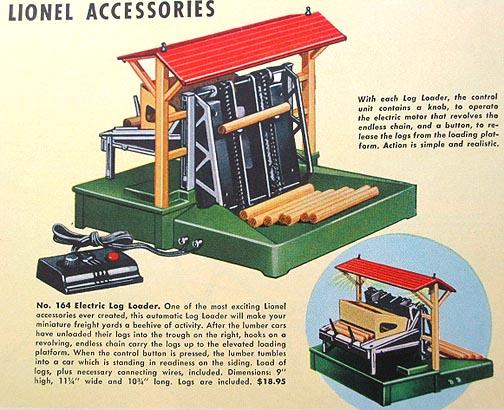 Alan models O scale and wants advice from other Lionel enthusiasts:
Alan models O scale and wants advice from other Lionel enthusiasts:
“I purchased a used Lionel 6-12915 Log Loader; Lionel #164 Log Loader. It is in good shape and all electrical parts function perfectly. The problem I have relates to the chain drive system. The chain on the right side is loose with a significant amount of slack in it such that two of the three spades flop down from the weight of the log and the log falls off. I need to know how to adjust the tension on the loose chain so that all of the three pairs of spades will lift the logs up into the loader section. Any assistance will be appreciated.”
How to Anchor a Drive Cog on a Flying Scotsman
John A asks readers:
“Can anyone tell me how I can anchor the nylon drive cog on my Flying Scotsman, as unlike the brass ones, the main shaft is not grooved and are held by 2 brass inserts. These slide when motor rotates and the engine remains stationary.”
Fixing an 022 Switch Post Problem
Gary operates O scale and asks readers:
“I am in the process of tying power wiring to an 022 switch, as the center post pulled out from the frame. I know this post is a ground. I can’t find a way of getting it back down. It was probably riveted. I need a solution. Thanks”
Which Turnouts are Best – Remote or Manual?
![]() Reggie models N scale and wants readers advice on turnouts:
Reggie models N scale and wants readers advice on turnouts:
“I have started modeling a layout and I was interested on getting some feedback about turn outs, remote versus manual. Which type is the most preferred and why?”
DCC Wiring vs. DC Wiring
Art models N scale and has this question for readers:
“I have watched many seemingly simple videos on DCC wiring and it seems to me that the only real difference from DC is the installation of a bus line and feeders at intermittent spots along the layout BUT the bus location line still has to be connected to the main power source, right? So why does running DCC necessitate installation of a the bus and feeders if ultimately the power is coming from th same main source? Sorry if this is a stupid question. I would love to go DCC to get all the sounds, horns, engines, etc but it just seems like an awful lot of work! I am using Kato unitrack by the way. Thanks in advance for any help!”
How To Fix Lighting Problems
Keith has a lighting question for readers:
I run a OO analogue system on my layout.I have 4 types of lights up:
1/ Tardis box
2/ Ice cream van
3/ Security light
4/ Building/street lights
Each of these are run separately but the building and street lights come on but after a short time they fade out and go off. If I leave them for a short while I can turn them back on but again will go off. Can any of your readers give me any advise to rectify this problem. All the power comes off a Hornby HM2000.
How to Suspend a Track from the Ceiling In Candy Store
 Simon has an unusual question for readers:
Simon has an unusual question for readers:
“Hi all, I have never had a train set in my life and this is what I want to do. I have a sweet shop in Sutton on sea and the room is around 5 meters sq but I want to suspend the track from the ceiling so that you can see from under the track as well. I would like to use O gauge for the size of train. How can I suspend the track so it looks like it’s floating. What track do I use? How many are there? Where do I get it from? I really have know idea where to start if any one is local to me pop in and I sort you a free bag of sweets (candy). lol.”






